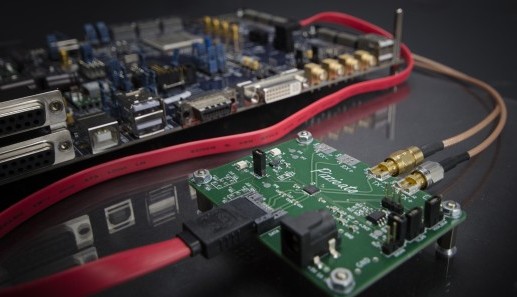A Transmitter that runs on Bits
on

Forget all you ever knew about radio transmitter design; Cambridge Consultants has completed initial trials of a new fully-digital radio transmitter system. The design, called Pizzicato consists of an integrated circuit (which outputs a high speed digital bit stream) and an antenna… that’s it! There are no conventional radio stages or D/A converters; unlike Software Defined Radio (SDR) the new system is purely digital. I must admit to building some digital designs in the past that unintentionally emitted RF interference but in this new system patented algorithms perform ultra-fast computations in real time, making it possible for standard digital technology to generate precise and controlled high-frequency radio signals directly.
Quoting from the original press release: “Our first trial of the technology has created 14 simultaneous cellular base station signals,” said Monty Barlow, director of wireless technology at Cambridge Consultants. “But it is the potential which is so exciting. Like mainstream microprocessing, a Pizzicato-based radio would directly benefit from Moore’s Law – shrinking in cost, size and power consumption with each new generation of silicon fabrication.”
“If we’re going to get high-speed broadband to every mobile phone in the world, we’ll need lots of tiny, high-performance radios in those phones. The radios will be squashed together in a way that analogue just doesn’t tolerate. Whereas a Pizzicato-like digital radio can follow Moore’s Law to smaller size and lower power consumption.”
“It could also be programmed to generate almost any combination of signals at any carrier frequencies, nimbly adapting its behaviour in a way that is impossible for conventional radios. It is early days for this technology but we believe radio design has reached a turning point.”
“Crowding 50 analog radios together on one chip, switching their operational parameters every few microseconds and expecting them to work at 60 GHz is an analog designer’s nightmare. With Pizzicato, we have created a glimpse of future disruptive technology – a radio built purely from computing power.”


Discussion (0 comments)